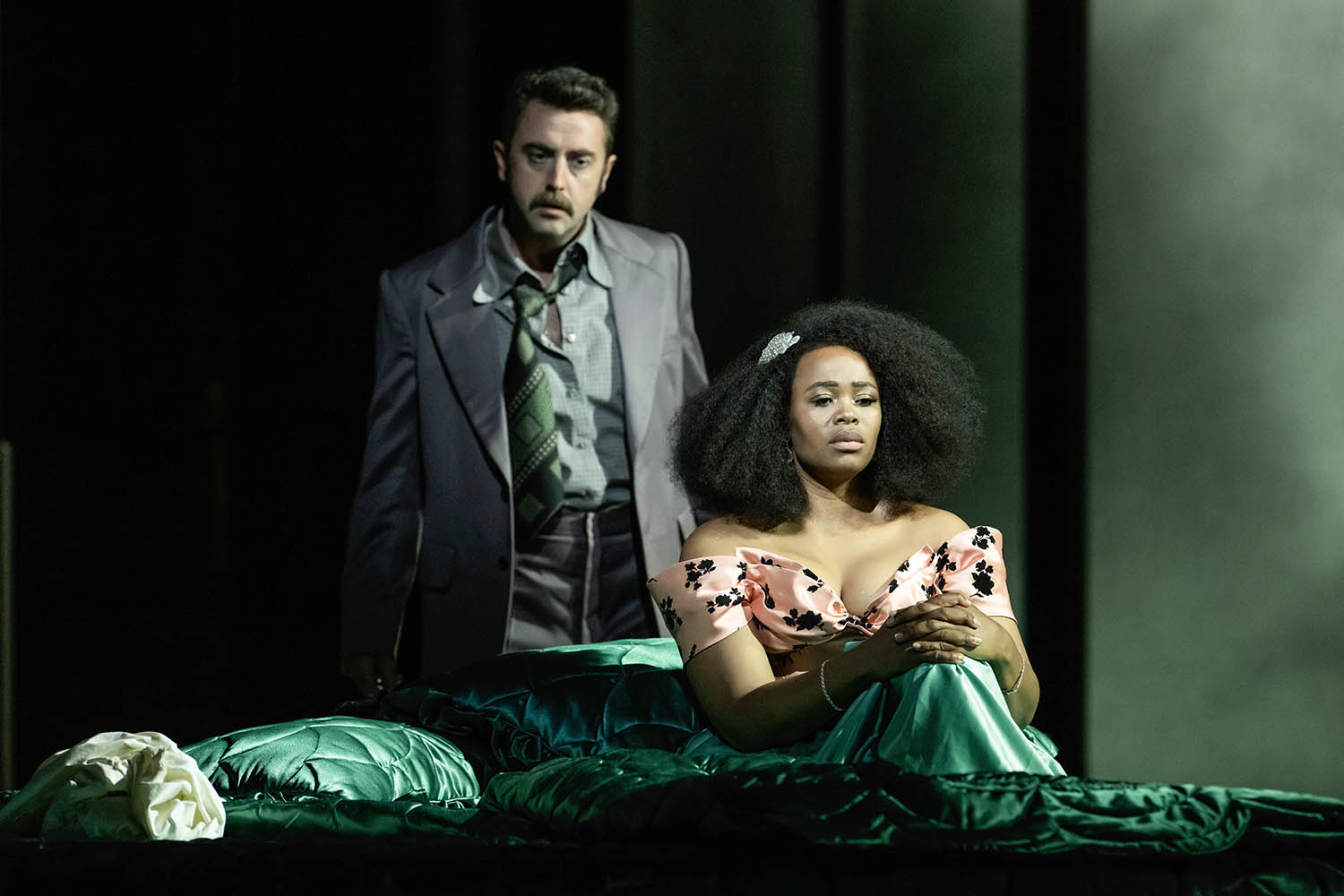In the catalogue of truths crammed into Handel’s opera-oratorio Semele (1743), one imperative shouts out: don’t fall for a god. They may look hot – especially when singing long arias wearing only underpants, as in the Royal Opera’s new production – but they’ll reduce you to ashes. In the grate of life, to borrow a metaphor used liberally here, from the front curtain resembling a grill to the symbolic fireplace centre stage, we are all cremains. Based on Greek myth to a sharp libretto by William Congreve, Semele holds vanity, love and tragedy in balance, allowing us, in theory, to laugh at the end.
A naive young woman destroyed by a powerful man is less than funny to a modern audience. Wrestling past and present attitudes is a live issue in opera productions. Here, the wish to show skittish Semele as an independent-minded woman is admirable but remote from text or music. The production’s bleak ending – she is dead by Jove’s thunderbolt – is uneasy, even if reflective of the story’s moral ambiguities. Alice Coote, as Jupiter’s betrayed wife, Juno, is arguably as much in need of redemption as Semele. Her music spits vengeance, terrifically delivered by Coote, but should we not also allow for her anguish?
Oliver Mears’s staging, with Pretty Yende in the title role and conducted by Christian Curnyn, has many strengths. How could it not: this is one of Handel’s most dazzling scores. Top arias tumble out in quick succession. Orchestral writing is rich in colour and virtuosic string action. The Royal Opera orchestra and chorus are now adept at Handel (Semele is the latest of stagings of works written for Covent Garden in the 1730s-40s). Curnyn, a first-rate baroque specialist, is unmissable in this music. In Annemarie Woods’s designs (lighting by Fabiana Piccioli), action is updated to a sleek Paris hotel. Elegant women shop in grands magasins. Identikit staff move with uniformly odd hand gestures (less would have been more). Ben Bliss as a besuited Jupiter, suavely in charge, was impressive. Yende took time to settle but was on form for her big aria, Myself I shall adore. Brindley Sherratt, Carlo Vistoli, Niamh O’Sullivan and Marianna Hovhannisyan complete the cast, giving their Handelian best.
Two other new productions deserve more space. An astute, superbly sung Le nozze di Figaro at Glyndebourne, directed by Mariame Clément and designed by Julia Hansen (in powder-coloured late 18th-century style, with a revolve that proved pesky on the first night), caught every nuance, tears and laughter, of Mozart’s masterpiece, with a fine ensemble and star performances from Huw Montague Rendall and Louise Alder as the Count and Countess, and Michael Nagl and Johanna Wallroth as Figaro and Susanna. Riccardo Minasi, conducting, slowed down and sped up inexplicably, but the Orchestra of the Age of Enlightenment, despite these tempo swerves, played with gusto.
And a noisy bravo to Grange Park Opera for staging the almost unstageable with such vigour: Tchaikovsky’s rarity Mazeppa, a bloodthirsty exploration of Ukraine and Russia under Peter the Great, insightfully conducted by Mark Shanahan and directed by David Pountney. Some of the excellent cast – Rachel Nicholls, David Stout – will take leads in Wagner’s Ring, starting at Grange Park next year. Tickets go on sale on 15 July.
Semele is at the Royal Opera House, London WC2, until 18 July; Le nozze di Figaro is at Glyndebourne, Lewes, until 21 August; and Mazeppa is at Grange Park Opera, West Horsley
Photograph by Camilla Greenwell

